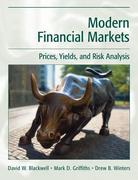Question
On January 1, the total market value of the Tysseland Company was $60 million. During the year, the company plans to raise and invest $25
On January 1, the total market value of the Tysseland Company was $60 million. During the year, the company plans to raise and invest $25 million in new projects. The firm's present market value capital structure, shown below, is considered to be optimal. Assume that there is no short-term debt.
| Debt | $30,000,000 |
| Common equity | 30,000,000 |
| Total capital | $60,000,000 |
New bonds will have an 6% coupon rate, and they will be sold at par. Common stock is currently selling at $30 a share. The stockholders' required rate of return is estimated to be 12%, consisting of a dividend yield of 4% and an expected constant growth rate of 8%. (The next expected dividend is $1.20, so $1.20/$30 = 4%.) The marginal corporate tax rate is 30%.
The data has been collected in the Microsoft Excel Online file below. Open the spreadsheet and perform the required analysis to answer the question below.
Open spreadsheet
-
In order to maintain the present capital structure, how much of the new investment must be financed by common equity? Enter your answer in dollars. For example, $1.2 million should be entered as $1200000. Round your answer to the nearest dollar. Do not round intermediate calculations.
$ fill in the blank 2
-
Assuming there is sufficient cash flow such that Tysseland can maintain its target capital structure without issuing additional shares of equity, what is its WACC? Round your answer to two decimal places. Do not round intermediate calculations.
fill in the blank 3 %
-
Suppose now that there is not enough internal cash flow and the firm must issue new shares of stock. Qualitatively speaking, what will happen to the WACC?
_____IIIIIIIVV
I. rs will decrease and the WACC will increase due to the flotation costs of new equity. II. rs and the WACC will not be affected by flotation costs of new equity. III. rs and the WACC will increase due to the flotation costs of new equity. IV. rs and the WACC will decrease due to the flotation costs of new equity. V. rs will increase and the WACC will decrease due to the flotation costs of new equity.
Step by Step Solution
There are 3 Steps involved in it
Step: 1

Get Instant Access to Expert-Tailored Solutions
See step-by-step solutions with expert insights and AI powered tools for academic success
Step: 2

Step: 3

Ace Your Homework with AI
Get the answers you need in no time with our AI-driven, step-by-step assistance
Get Started


